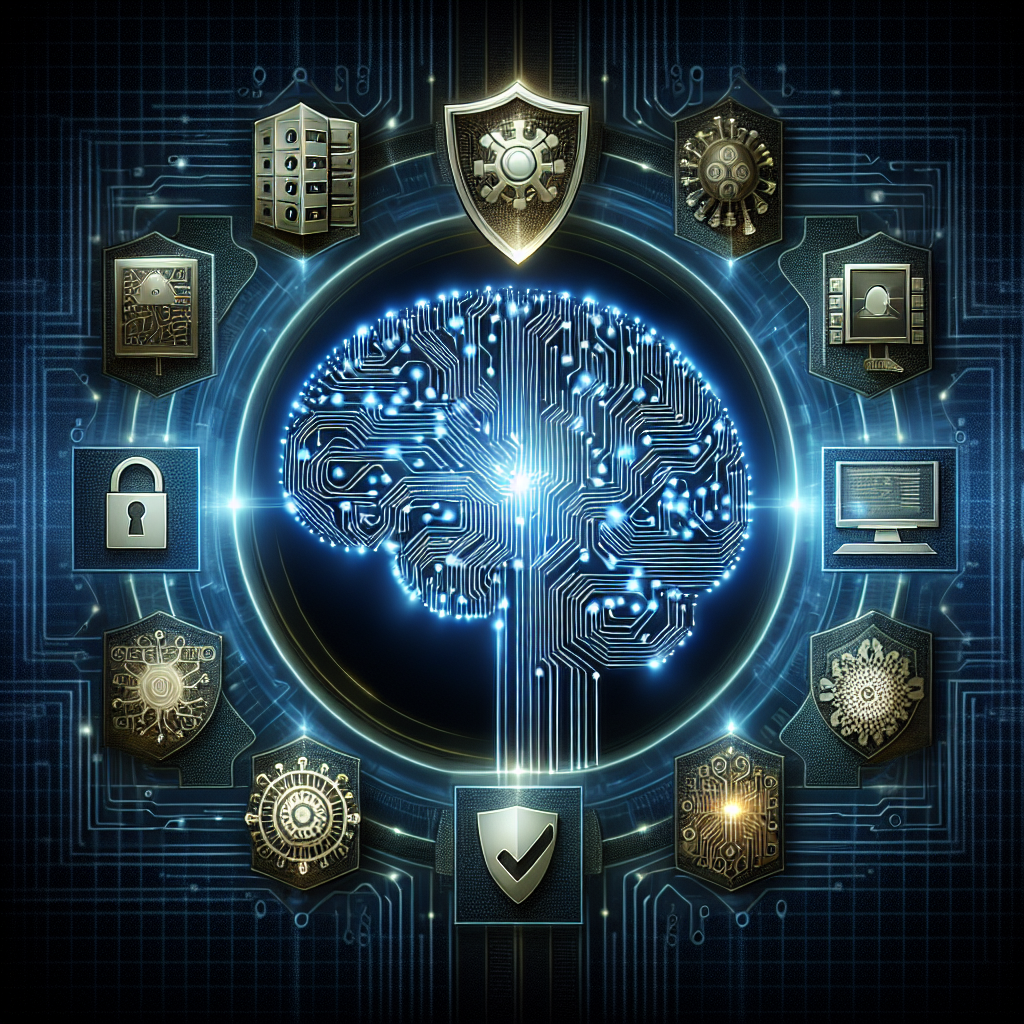Artificial Intelligence (AI) and cybersecurity have become increasingly intertwined as governments around the world face growing threats from cyber attacks. With the rise of sophisticated hacking techniques and the increasing reliance on digital systems for government operations, the need for robust cybersecurity measures has never been greater. AI is being used to enhance cybersecurity efforts by providing advanced threat detection, response, and mitigation capabilities that can help protect government systems and data from malicious actors.
AI and cybersecurity: A powerful combination
AI technologies, such as machine learning and natural language processing, have the ability to analyze vast amounts of data in real-time to identify patterns and anomalies that may indicate a cyber threat. This is particularly important for government agencies that handle sensitive information and critical infrastructure that are prime targets for cyber attacks.
One of the key areas where AI is making a significant impact in cybersecurity is in threat detection. Traditional cybersecurity systems rely on rules-based approaches to detect known threats, but these methods are often ineffective against new and evolving threats. AI-powered systems, on the other hand, can learn from past incidents and continuously adapt to new threats, making them much more effective at detecting and responding to cyber attacks.
AI is also being used to automate routine cybersecurity tasks, such as patch management and vulnerability scanning, which can help government agencies streamline their security operations and free up resources for more strategic initiatives. By automating these tasks, AI can help government agencies respond more quickly to potential threats and reduce the likelihood of a successful cyber attack.
In addition to threat detection and automation, AI can also be used to enhance incident response capabilities. In the event of a cyber attack, AI-powered systems can analyze the attack vector, identify the extent of the breach, and recommend appropriate remediation actions. By providing real-time insights and recommendations, AI can help government agencies respond more effectively to cyber incidents and minimize the impact on their systems and data.
Challenges and considerations
While AI has the potential to revolutionize cybersecurity for government agencies, there are also challenges and considerations that need to be addressed. One of the main challenges is the potential for AI systems to be exploited by malicious actors. If AI-powered cybersecurity systems are not properly secured, they could be used to launch sophisticated cyber attacks or manipulate data to deceive security analysts.
Another challenge is the lack of transparency and interpretability in AI algorithms. In order to trust AI-powered cybersecurity systems, government agencies need to understand how these algorithms work and be able to explain their decisions. This is particularly important for critical systems where the consequences of a false positive or false negative could be catastrophic.
Privacy concerns are also a major consideration when using AI for cybersecurity. Government agencies need to ensure that AI systems are compliant with data protection regulations and that they do not infringe on the privacy rights of individuals. This is especially important when dealing with sensitive government data that may contain personal information or classified information.
Finally, there is a shortage of skilled cybersecurity professionals with expertise in AI. Government agencies need to invest in training and development programs to build a workforce that is capable of leveraging AI technologies for cybersecurity purposes. By investing in the right talent and resources, government agencies can maximize the benefits of AI while minimizing the risks.
FAQs
Q: How can AI help government agencies detect and respond to cyber threats?
A: AI can analyze vast amounts of data in real-time to identify patterns and anomalies that may indicate a cyber threat. By leveraging machine learning and natural language processing, AI-powered systems can detect and respond to cyber attacks more effectively than traditional rules-based approaches.
Q: What are some of the challenges of using AI for cybersecurity in government agencies?
A: Some of the main challenges include the potential for AI systems to be exploited by malicious actors, the lack of transparency and interpretability in AI algorithms, privacy concerns, and the shortage of skilled cybersecurity professionals with expertise in AI.
Q: How can government agencies ensure that AI-powered cybersecurity systems are secure and compliant with regulations?
A: Government agencies can ensure the security and compliance of AI-powered cybersecurity systems by implementing robust security measures, conducting regular audits and assessments, and staying up-to-date on relevant regulations and best practices. It is also important to work with trusted vendors and partners who have experience in developing secure AI solutions.
Q: What are some best practices for government agencies looking to implement AI for cybersecurity?
A: Some best practices include conducting a thorough risk assessment before implementing AI-powered cybersecurity systems, investing in training and development programs for cybersecurity professionals, and collaborating with industry partners to stay informed about the latest threats and trends in cybersecurity. It is also important to establish clear policies and procedures for using AI in cybersecurity and to regularly review and update these policies as needed.
In conclusion, AI has the potential to revolutionize cybersecurity for government agencies by providing advanced threat detection, response, and mitigation capabilities. By leveraging AI technologies, government agencies can enhance their cybersecurity efforts and protect their systems and data from malicious actors. However, there are also challenges and considerations that need to be addressed, including the potential for AI systems to be exploited, the lack of transparency in AI algorithms, privacy concerns, and the shortage of skilled cybersecurity professionals with expertise in AI. By addressing these challenges and adopting best practices, government agencies can maximize the benefits of AI for cybersecurity while minimizing the risks.

